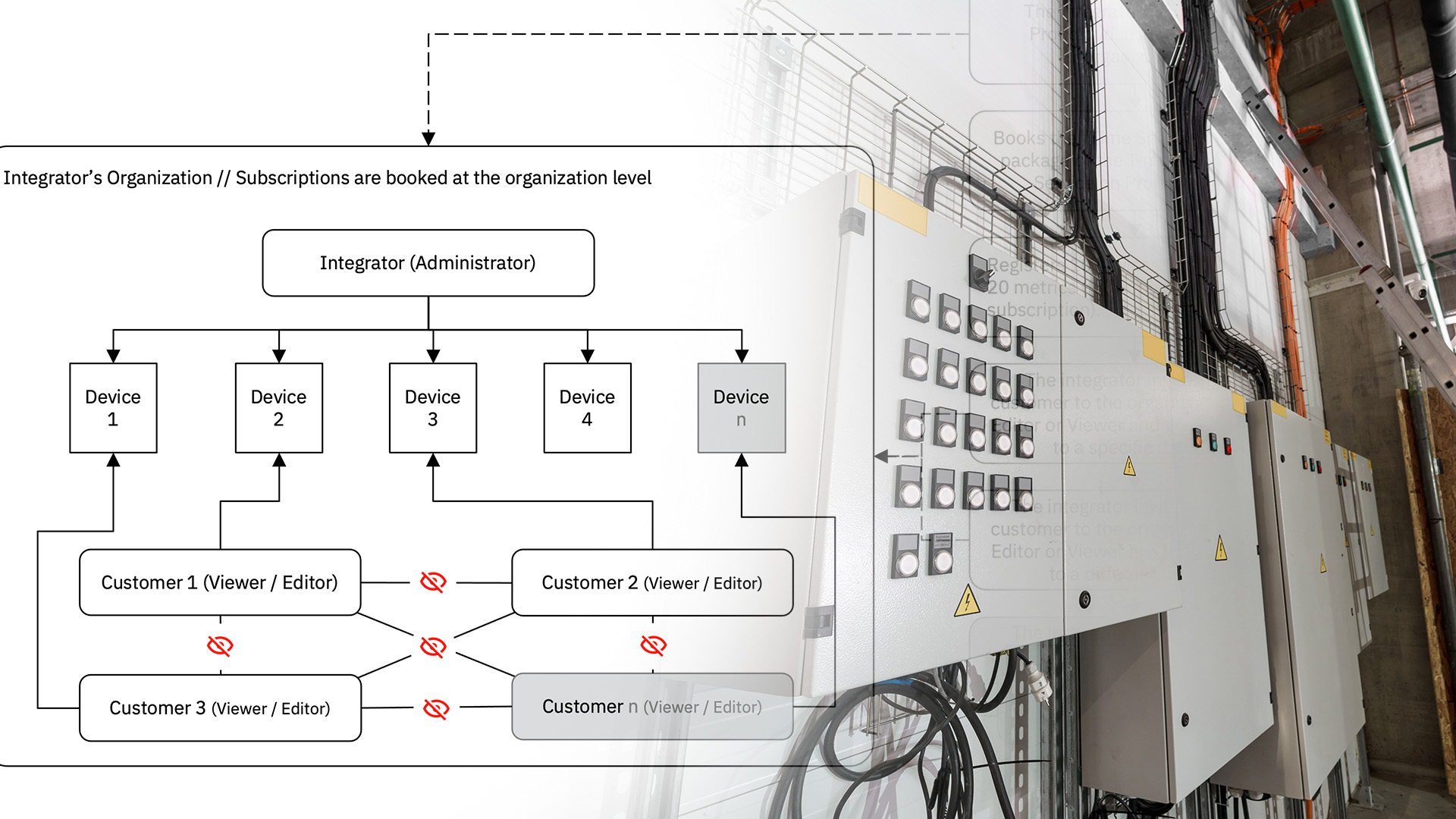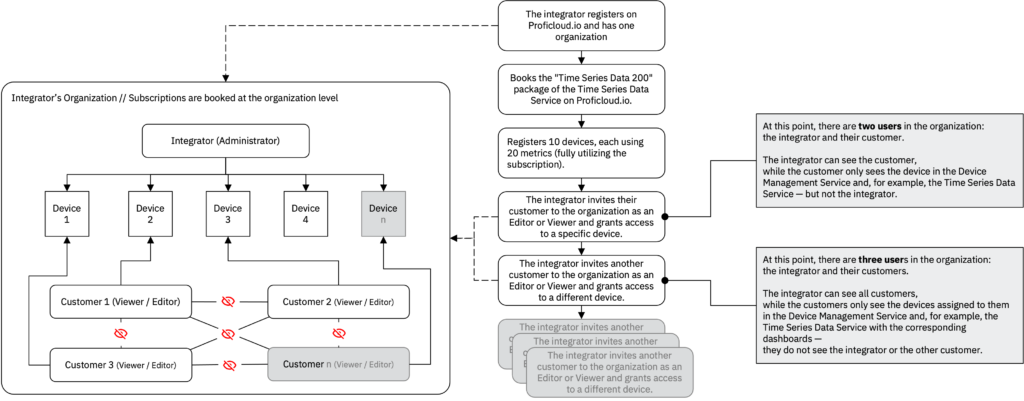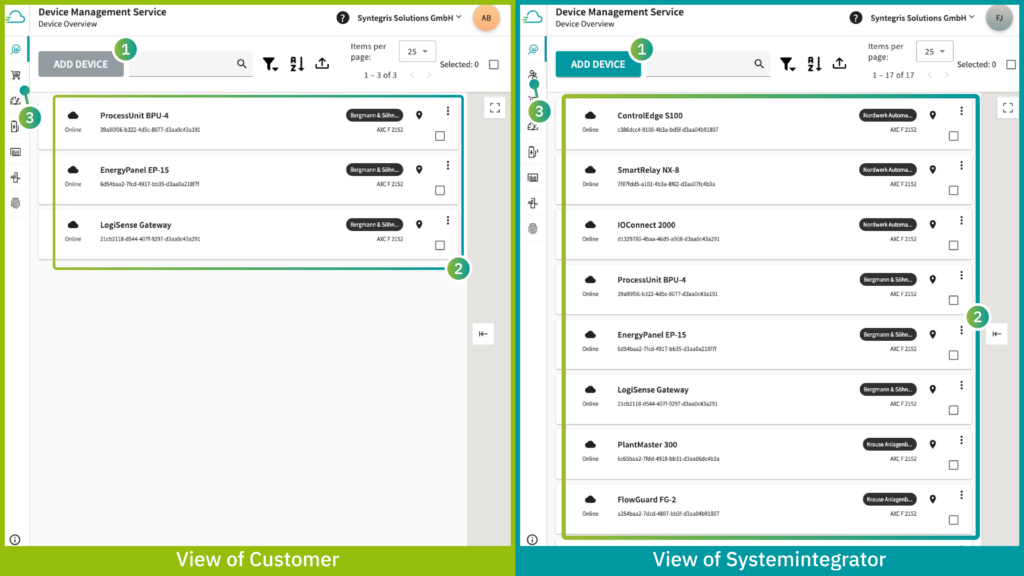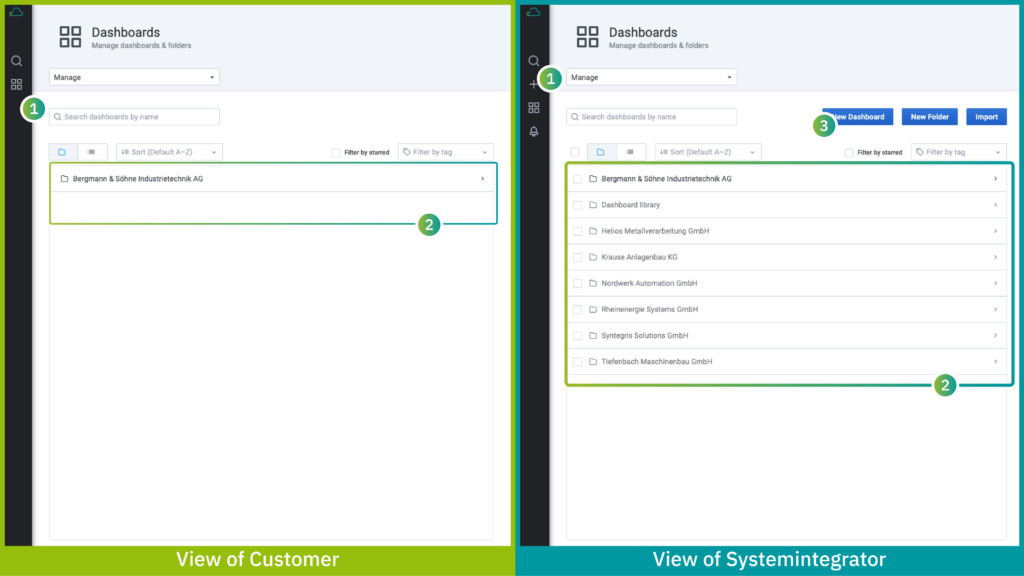
Which Organizational Model Fits Your IIoT Project? A Beginner’s Guide with Proficloud.io
Curious how to launch IIoT projects efficiently, even without in-house cloud expertise? Discover which organizational model on Proficloud.io best supports you in making operations easier—so you can meet high expectations and stay focused on your core business.
The digitalization of building automation and energy management has become a reality for many mid-sized companies. But especially for decision-makers who are just starting out with IIoT projects, one central question quickly arises: How can digital solutions be integrated so that they actually simplify everyday operations? Choosing the right organizational structure is key. Cloud platforms like Proficloud.io offer several options—but which one is right for your company?
Scenario 1: One Organization for Multiple Customers
Many companies start their IIoT journey in close cooperation with a system integrator. In this model, the integrator sets up a central organization on Proficloud.io. Customers receive access rights as editors or viewers as needed but do not have full control over device or user management. The integrator remains responsible for all administration.

Click to expand image
Advantages of This Model
- Centralized management: The integrator handles updates, maintenance, and troubleshooting.
- Focus on core business: Customers can concentrate on their primary tasks without worrying about technical details.
- Typical use cases: Service and maintenance contracts for PV systems, HVAC systems, or pilot projects with limited duration.
Real-life Example:
A mid-sized energy management company chose this model to efficiently manage several smaller installations. Monitoring runs centrally via the integrator, who can also quickly intervene in case of issues—saving time and reducing coordination efforts.
View into the Smart Services
Device Management Service

Click to expand image
1: The system integrator’s customer (left) cannot add or remove devices. The integrator (right) can add or remove devices.
2: The system integrator’s customer (left) only sees the devices that have been assigned to them by the integrator.
3: The system integrator’s customer (left) cannot access the User Management. The integrator can invite or edit additional users.
Energy Management Service

Click to expand image
1: The system integrator’s customer (left) can only see the dashboards assigned to them in the Energy Management Service. The system integrator (right) can see all dashboards.
2: The system integrator’s customer (left) can only see the metering points assigned to them. They cannot see unassigned metrics. The system integrator can see all metering points and assign unassigned metrics.
3: The system integrator’s customer (left) cannot create new metrics or metering points. The system integrator can add or edit metrics and metering points.
4: The system integrator’s customer (left) cannot create new dashboards. The system integrator can create, delete, or edit dashboards.
Time Series Data Service

Click to expand image
1: The system integrator’s customer (left) cannot add or edit dashboards, alerts, or notification channels. The system integrator can add dashboards, create and edit alerts, and notification channels.
2: The system integrator’s customer (left) can only see and use the dashboard groups and dashboards that have been explicitly assigned to them. The system integrator can view and edit all dashboard groups and dashboards.
Considerations and Best Practices
- Designed for guided collaboration: While this model offers a streamlined setup, it’s best suited for scenarios where centralized management is preferred. For those seeking full autonomy (e.g., adding devices or users independently), additional tools or models may be better aligned.
- Clear structures for data security: When multiple customers operate within one organization, establishing transparent roles and permission structures ensures data privacy and smooth collaboration.
- Scalable with structure: As projects grow, so does complexity. With the right processes in place, even a large number of parallel projects remain well-organized and easy to manage.
In practice:
This model is ideal for centrally coordinating many small-scale projects—reducing administrative effort on the customer side while maintaining a high level of control and efficiency.
Deep Dive: Responsibilities and Role Management in Proficloud.io
How does role assignment work?
Proficloud.io allows individual assignment of roles such as Viewer and Editor and resource based access control (RBAC) (devices and dashboards). For larger organizations, it’s recommended to establish clear naming conventions and rules for role assignment.
Practical Tip:
Perform regular rights reviews and document who has access to which devices. This creates transparency and enhances security.
Conclusion
For many mid-sized companies, the integrator model is a pragmatic entry into IIoT. It delivers quick results, minimizes complexity, and relieves internal teams. However, those planning for long-term flexibility and autonomy should consider alternative models early on.
Discover More Insights

Proficloud.io for system integrators and their customers
Also explore Scenario 2 and learn more about practical approaches for fostering effective collaboration between system integrators and customers on Proficloud.io.

Schedule live demo
Would you like to see the functions live? We will be happy to show you all the functions directly in live operation, make an appointment today!

